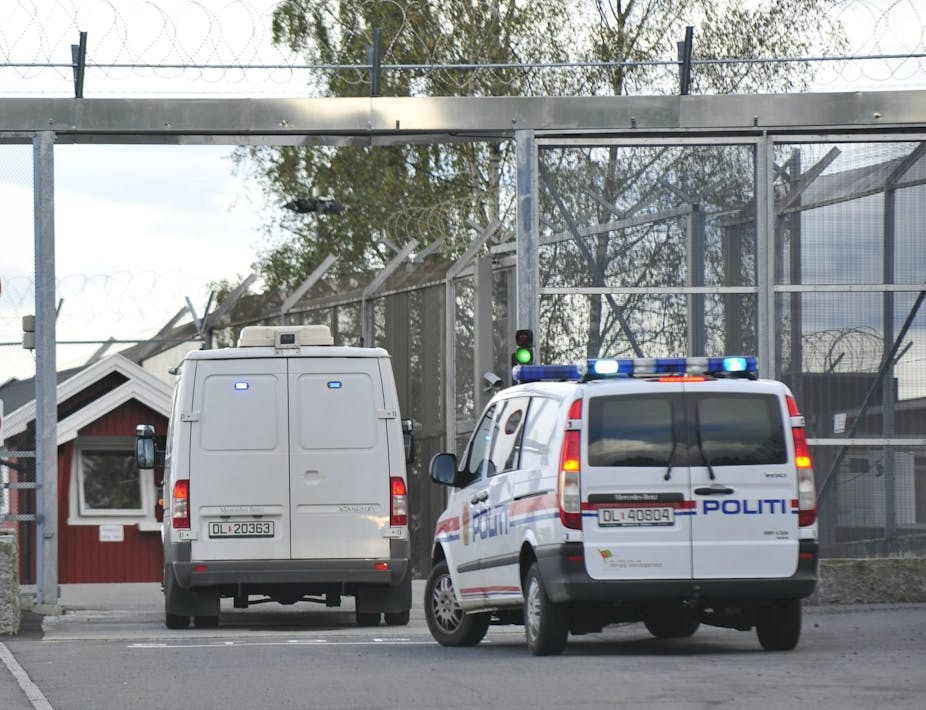Prisons in Sweden, Norway and Finland have a smaller average inmate population, bigger cells and broader access to social services than jails in English-speaking countries, a 10-year study has found.
The authors of the study, who have published their findings in a book called Contrasts in Punishment: An explanation of Anglophone excess and Nordic exceptionalism, studied a vast amount of data on prisons in Sweden, Norway, Finland, New South Wales, New Zealand and England.
The researchers analysed annual reports from correctional services dating back to 1850, government legislation, penal codes, white papers, academic articles on prisons, media coverage and conducted interviews in about 60 prisons.
“In the Nordic countries, the punishment is deprivation of liberty and you don’t need to impose extra punishment. That was not the case with the Anglophone countries,” said Dr Anna Eriksson, Senior Lecturer in Criminology at Monash University, who co-authored the book with Professor John Pratt from the Victoria School of Wellington.
Based on 2010 data, England’s average prison population is 608, New Zealand’s is 458, then New South Wales’ is 324. By contrast, the average prison population is 92 in Finland, 87 in Sweden and just 73 in Norway.
In Oslo, Norway, a typical cell is 8 x 8 metres for a single prisoner, whereas in Wellington, New Zealand, two prisoners share a cell measuring 4 x 2 metres, the study found.
Every cell in the recently-opened high-security Halden Prison in Norway features a television, en suite bathrooms, unbarred windows and designer furniture.
“Guards are unarmed and prisoners complete questionnaires asking how their prison experience can be improved,” Dr Eriksson said.
Scandinavian prison guards have longer and more rigorous training than those in Anglophone countries and often mix with prisoners in the same canteen area. Scandinavian countries have a male guard to female guard ratio of about 3:2 in their male prisons, compared to as much as 4:1 in male prisons in English-speaking countries.
Inmates in Nordic countries access the same social services as the broader population, including free education through to university and free medical treatment.
“The research shows the current cultures that exist have very long historical roots. It has a lot to do with class relationships, the value and function of education, the roles of religion in the late 19th and the early 20th century, and the role of the central state in everyday governance,” said Dr Eriksson.
“Whereas Nordic cultures have very flat class structures, they have a strong hierarchical class structure in England that spread to the other English-speaking countries and that’s reflected in the attitudes to prisons.”
Dr Eriksson said “the role of experts (as opposed to politicians and lobby groups), and the role of the media, have played a major role in maintaining the focus on humane and inclusive approaches to punishment.”
“No government in the Nordic countries has been elected on a law and order platform, calling for harsher sentences – it doesn’t resonate well. But here in Australia, it’s a real political football.”
There are no private prisons in Nordic countries, she said, which enjoy some of the lowest incarceration rates in the Organisation for Economic Co-operation and Development (OECD).
Dr Hilde Tubex from the University of Western Australia’s Crime Research Centre said Scandinavia was well known within criminology circles for it’s progressive approach to punishment.
“They have managed for many years now to keep their imprisonment rate low with no repercussions for the crime rates or recidivism rates. In fact, they are doing better than we do,” she said.
Smaller institutions where conditions – apart from the deprivation of liberty – mirror the outside world as much as possible help prepare inmates for release, she said.
“John and Anna have been criticised by some Scandinavian prison researchers, who have said ‘Maybe you are painting this picture a bit too rosy and that some conditions, like for remand prisons are not so great’,” said Dr Tubex.
“But John and Anna have made the point, and I think they are right, we are not ignoring the fact that imprisonment is still a very unpleasant experience but the way prison centres are run in Scandinavian countries, they are a lot less unpleasant than they are in the Anglo Saxon world.”
Dr Tubex said a lot of research into prisons focused on the US and the UK.
“US and UK researchers tend to assume that what happens in the US and the UK is what is normal and it’s a matter of time before it happens everywhere. That’s obviously not the case.”
Dr Tubex described the decade-long study as “a very interesting piece of research.”
“It’s based on very in-depth research on contemporary and historical sources. I think their analysis is very reliable and of a high standard. It’s of great value to us to understand how Scandinavian people run their prisons and maybe learn some lessons.”

